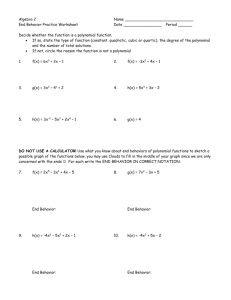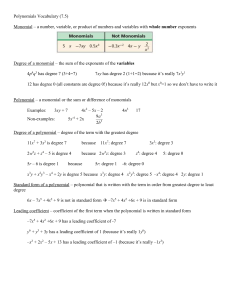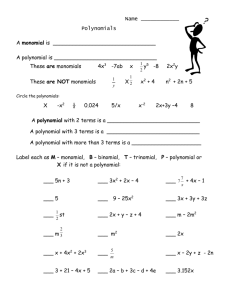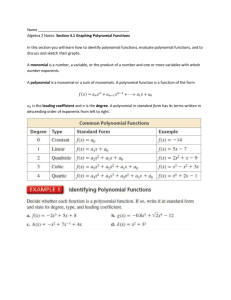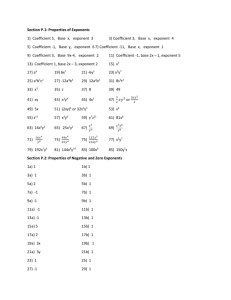polynomial introduction
advertisement
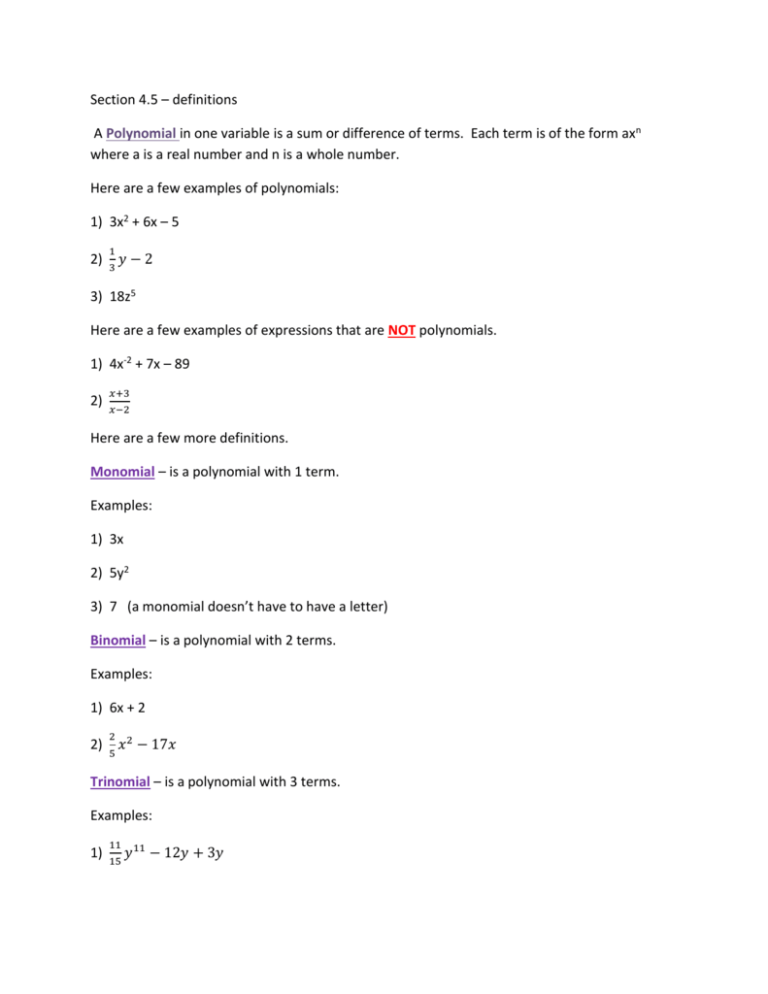
Section 4.5 – definitions A Polynomial in one variable is a sum or difference of terms. Each term is of the form axn where a is a real number and n is a whole number. Here are a few examples of polynomials: 1) 3x2 + 6x – 5 2) 1 3 𝑦−2 3) 18z5 Here are a few examples of expressions that are NOT polynomials. 1) 4x-2 + 7x – 89 2) 𝑥+3 𝑥−2 Here are a few more definitions. Monomial – is a polynomial with 1 term. Examples: 1) 3x 2) 5y2 3) 7 (a monomial doesn’t have to have a letter) Binomial – is a polynomial with 2 terms. Examples: 1) 6x + 2 2) 2 5 𝑥 2 − 17𝑥 Trinomial – is a polynomial with 3 terms. Examples: 1) 11 15 𝑦11 − 12𝑦 + 3𝑦 The coefficient of a term is the number in front of the term. The degree of a term is the exponent The following table lists each term together with its coefficient and degree 6x4 + 5x + 7 Term 6x4 5x 7 coefficient 6 5 7 Degree 4 1 0 The Leading Term of a polynomial is the term that has the highest exponent. For example: the leading term of the polynomial 6x + 3x2 + 5x3 – 2 Is 5x3 The Degree of a polynomial is the exponent of the leading term. The degree of 6x + 3x2 + 5x3 – 2 is 3, because three is the exponent of the leading term. The leading coefficient of a polynomial is the coefficient of the leading term. The leading coefficient of 6x + 3x2 + 5x3 – 2 is 5 because that is the number in front of the leading term. Polynomials may have several variables. We don’t study them very often. Here is an example of a polynomial in 3 variables. 7xy – 8z2 + 11 – 5xyz The individual parts (separated by a plus or minus sign) of a polynomial are called terms. Like terms are terms with the same variables (letters) raised to the same powers. These are like terms: 5𝑥 2 , 1 3 𝑥 2 𝑎𝑛𝑑 𝑥 2 These are not like terms: 5x, 5x2 Like terms can be added and subtracted. Non like terms can’t be added or subtracted. These terms can be added, and you add by adding the coefficients: 5x2 + 6x2 + 7x2 = These terms can’t be added 6x + 7y These also can’t be added 6x + 7x2

